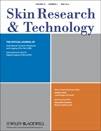Cosmetic efficacy evaluation of an anti-acne cream using the 3D image analysis system
Abstract
Background/purpose
Acne is a skin disease which accompanies pathological and morphological changes. Although acne severity is scored by clinicians based on pathological status, aesthetic aspect of acne symptom is also concerned by patients. This study was conducted to examine the usefulness of a 3D image analysis method for the cosmetic efficacy evaluation of an anti-acne cream.
Methods
Twenty-one healthy volunteers with acne lesions were recruited for the study and treated with an ‘anti-acne cream’ for 4 weeks. Acne symptoms on the facial skin were graded by the visual evaluation of photographs taken before and after the treatment. Skin color of acne lesions was and measured by a spectrophotometer. In addition, a 3D image analysis system was used to quantify skin surface roughness and acne volumes.
Results
Both visual and spectrophotometric assessments of acne lesions provided similar results indicating that the cream treatment improved acne symptoms significantly. The 3D image analysis of acne lesions confirmed that the cream treatment decreased skin surface roughness and acne volumes.
Conclusion
The current study demonstrated that the 3D image-based analysis of the skin may be useful for the quantification of acne symptoms of cosmetic relevance.




